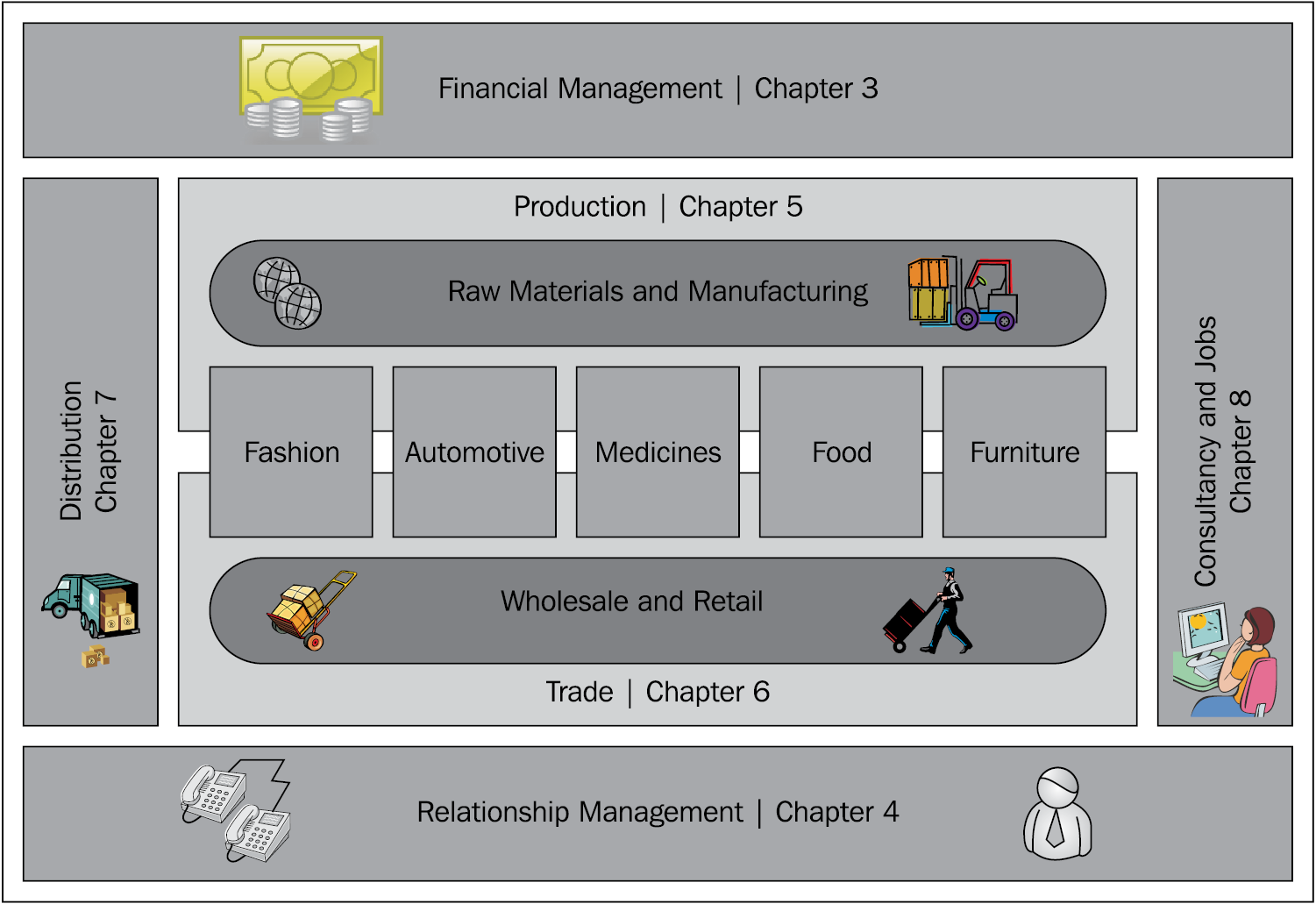Structure of this book
This book will cover most functional elements of Dynamics NAV in a number of vertical industries. We will do this in a supply chain matrix. The specific industries we will look at are fashion, automotive, medicines, food, and furniture. For production and trade we will look at the general process and we will see how consultancy and distribution companies help in this process.
The following image shows how this book is structured:

For all these industries we will look at what parts of the standard product can be utilized and where we need vertical solutions. We'll discuss how these vertical solutions will interface with the standard package or maybe even change the behavior of the standard product.
Two parts of the product however are so general in their use and usability for all industries that we'll discuss them in their own chapter. These are Financial Management and Relationship Management.
To emphasize the strength of the vertical concept, we'll design and create a vertical solution for a distribution company.
Now we will look at some of the basic concepts of the application.



